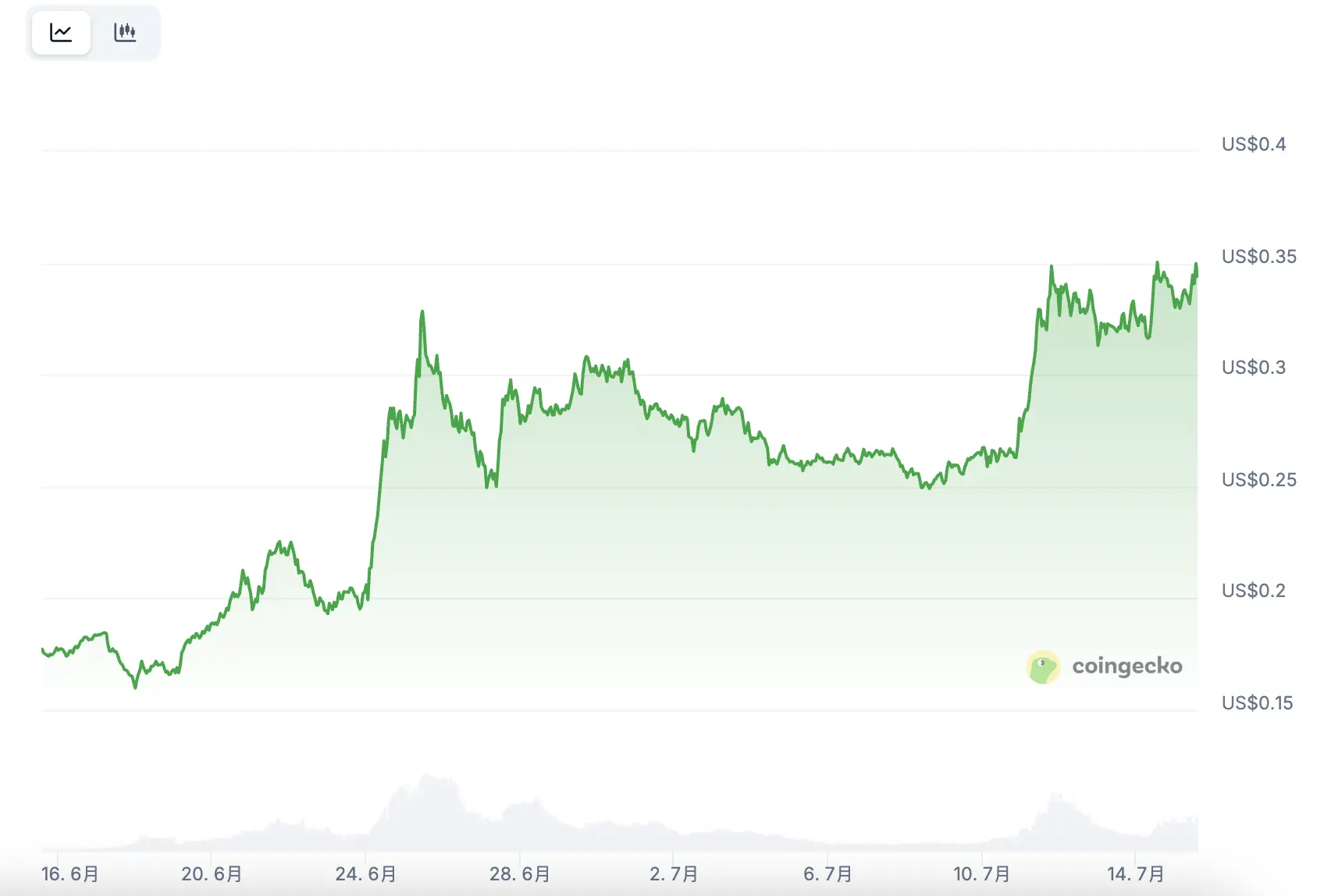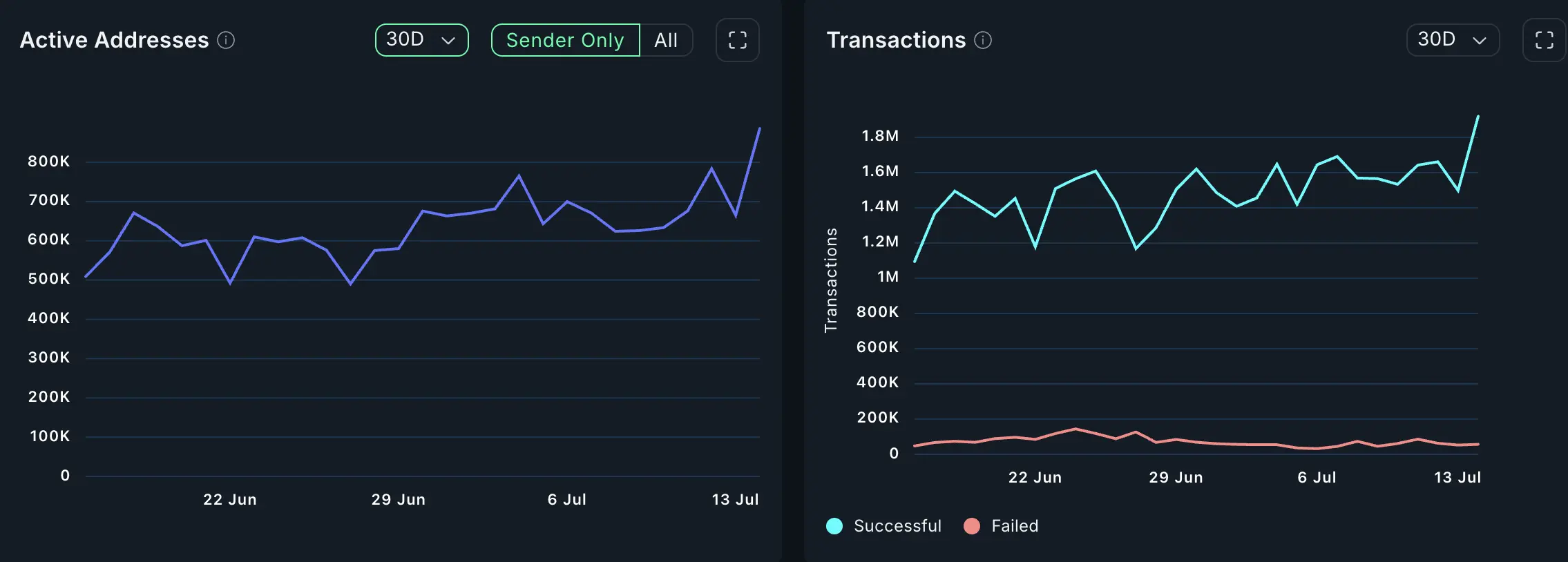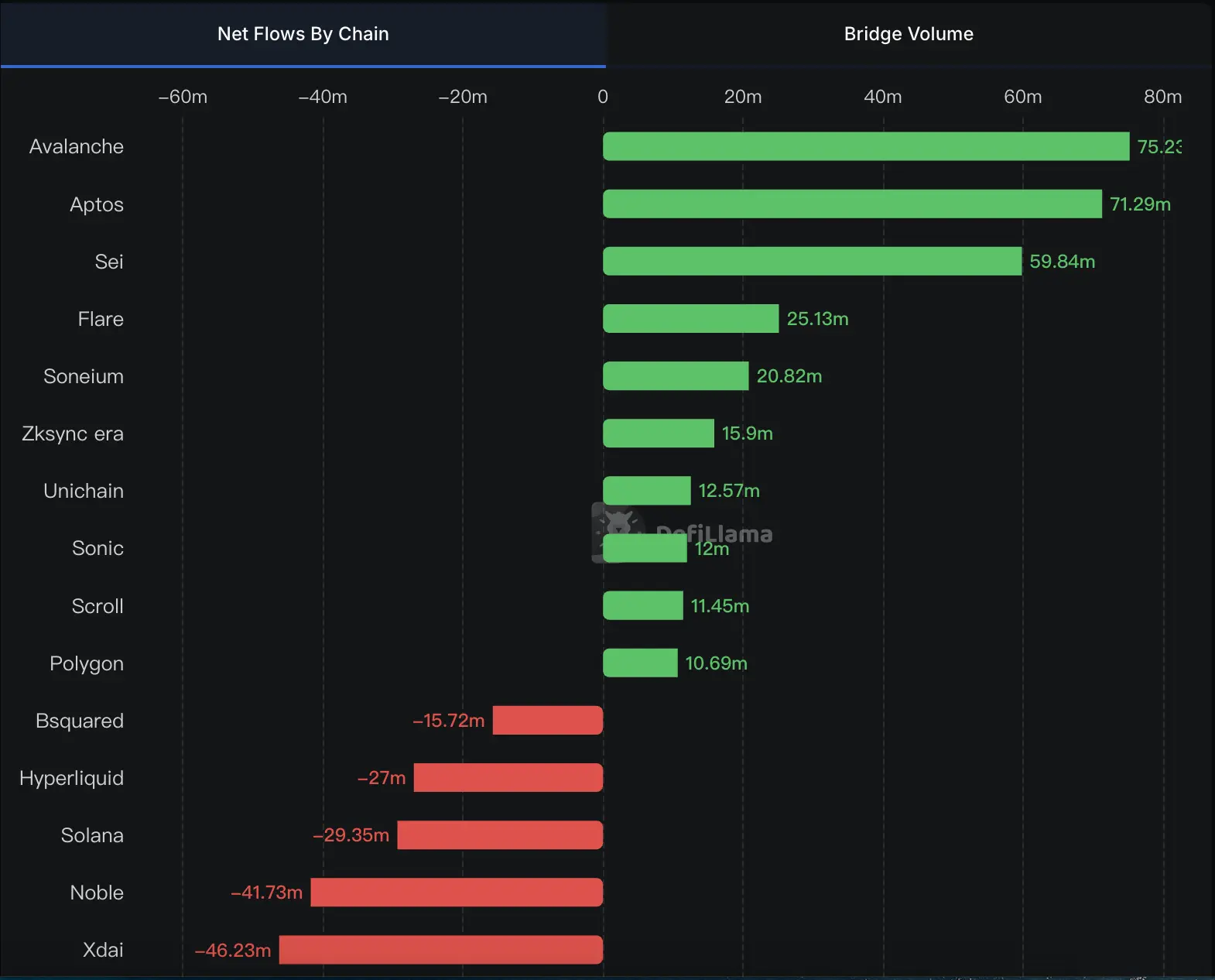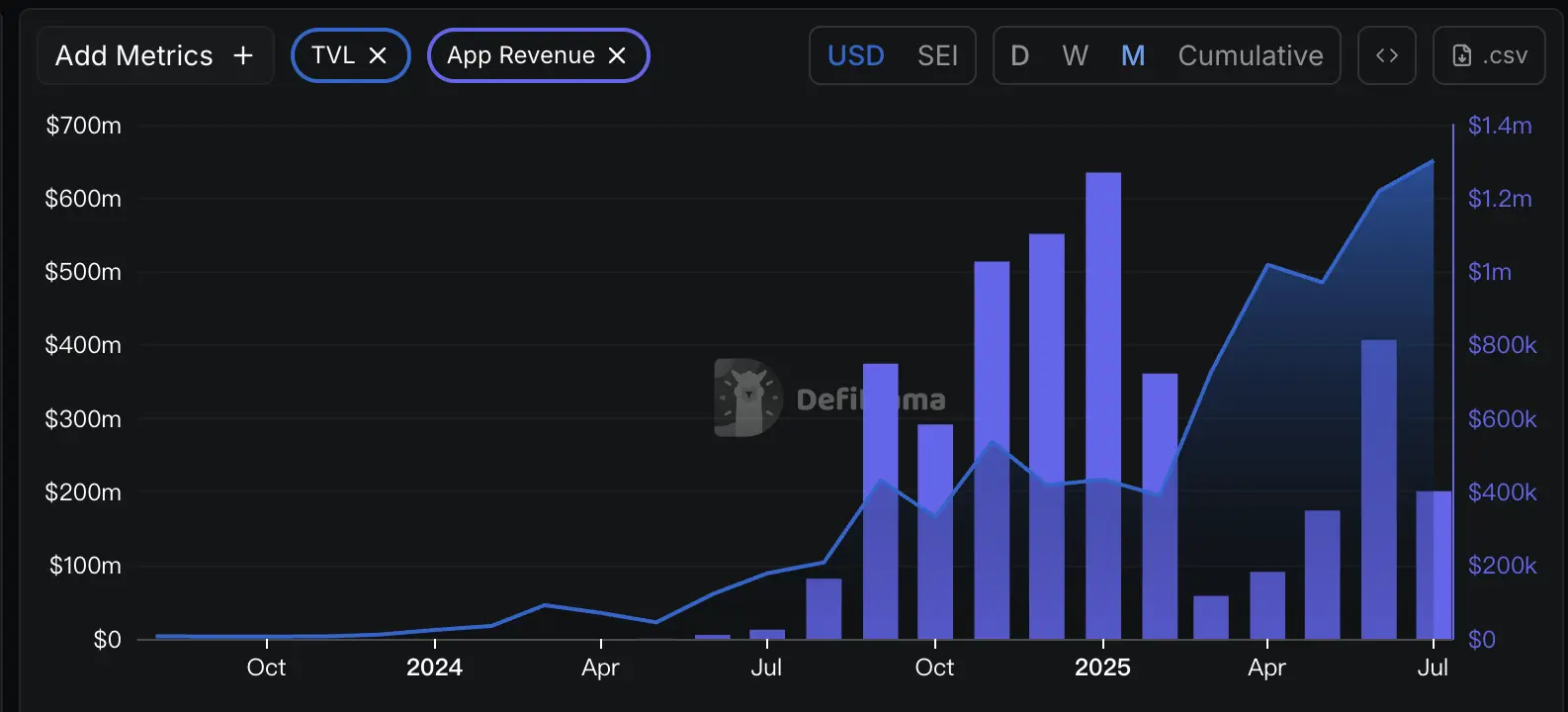Author: Nancy, PANews
Recently, Sei's coin price has continued to rise, and the activity level of the ecosystem and capital inflow performance have also been quite impressive, attracting market attention. Behind this momentum is Sei's accelerated推进技术升级与生态建设, combined with multiple factors such as the acceleration of the U.S. localization strategy and ETF compliance financial narrative. However, at this stage, Sei's development heavily relies on the gaming sector, and there is a monopolistic situation in the DeFi field, leading to challenges in the diversification and sustainability of the ecosystem.
The price of the coin has nearly doubled in a month, and the strong expansion of the ecosystem cannot hide its structural simplicity.
Recently, Sei's coin price and ecosystem have experienced explosive growth.
According to CoinGecko data, as of the time of writing, the price of SEI has risen to $0.347, with a nearly 97% increase in the past 30 days, reaching a new high in nearly half a year, and its total market capitalization once surged to over $2 billion. It is worth noting that SEI will unlock approximately 55.56 million tokens today (July 15) at 20:00, accounting for 1% of the current circulating supply, valued at approximately $18 million.

At the same time, several key data points in the Sei ecosystem also show explosive growth. According to a recent official announcement from Sei, since the launch of the Sei V2 version a year ago, the on-chain ecosystem activity has significantly increased, with daily trading volume growing by 3600% and TVL increasing by 790%.
According to Nansen data, as of July 15, the number of daily active addresses on Sei V2 has exceeded 886,000, with a nearly 74.1% increase in the past 30 days; the number of daily transactions reached 1.919 million, with an approximate 202.05% increase over the past three months. Despite the significant increase in Sei user participation, from the project distribution perspective, the on-chain games Nika Labs, Dragon Slither, and World of Dypians contributed over 89% of the active address volume, while World of Dypians, Nika Labs, and the soccer game EUFT dominated over 85.9% of the transaction count, indicating that the ecosystem's growth relies on these leading gaming projects and lacks diversity. DappRadar data shows that Sei ranks first among Web3 games in the past month.

In terms of funding, Sei also shows a strong ability to attract capital. According to DefiLlama data, in the past 30 days, the net inflow of funds into the Sei cross-chain bridge reached $59.84 million, ranking third among all public chains, only behind Avalanche and Aptos.

In terms of TVL, DeFillama data shows that as of July 15, Sei's total locked value reached $650 million, increasing by about 30.72% in 30 days. However, the TVL presents a highly concentrated structure, with Yei Finance alone accounting for $366 million of the TVL, which is more than half, and there are only 8 projects with TVL exceeding $10 million. This further indicates the risk of structural imbalance in Sei's ecosystem.

In terms of revenue, the Sei ecosystem shows signs of recovery. Although revenue fell to over $100,000 in March this year, it subsequently rebounded, reaching $813,000 in June, but still far below the peak of $1.27 million in January.
Overall, although Sei is currently in an expansion phase, its ecosystem relies heavily on leading projects, and the types of applications are relatively concentrated in the gaming sector. To achieve sustainable growth, it still needs to further diversify application types and improve user retention rates, including building a richer ecosystem foundation and accelerating the layout of multi-dimensional application scenarios.
Increasing commitment to localized layout in the United States, supported by WLFI's on-chain stockpiling.
SEI is regarded as an American concept coin, not only because its founding team has a strong American background but also, more importantly, because its early funding received backing from leading U.S. institutions such as Multicoin Capital, Jump Crypto, Coinbase Ventures, and GSR Ventures. Among them, Jump Crypto, which has recently transformed and returned, has been pointed out as one of the behind-the-scenes drivers of the significant rise in SEI's coin price in the last round.
With the increasingly open U.S. crypto policy, Sei is accelerating its local layout. In April of this year, the Sei Foundation announced the establishment of a U.S. nonprofit organization, the Sei Development Foundation, focused on promoting the development of the Sei protocol and increasing its visibility, indicating that it has genuinely entered the U.S. market at the legal and entity levels. Moreover, the on-chain interaction established between Sei and Trump's crypto project WLFI has brought more market imagination space. Between February and April of this year, WLFI repeatedly purchased 5.983 million SEI tokens through USDC, valued at approximately $1 million, and deposited them as collateral with Falcon Finance, managed by Ceffu. Not only that, but Sei Network was also selected as the candidate blockchain for WYST by the Stablecoin Committee of Wyoming in the United States last month; WYST is a stablecoin backed by fiat currency in the U.S. These developments further deepen the market's focus on Sei's U.S. main narrative.
In terms of the stablecoin ecosystem, Sei Network has also made significant progress. According to DeFiLlama data, by July 2025, its stablecoin TVL reached a historical high, and although it has slightly declined, it still maintains around $270 million. A few days ago, Sei also announced the upcoming launch of the native USDC token and CCTP V2, aimed at bringing the world's largest compliant stablecoin and frictionless cross-chain transfers to Sei's high-performance L1 blockchain. The native USDC has advantages such as compliance, 1:1 dollar exchange, and institutional channels, while CCTP V2 supports efficient liquidity and cross-chain applications between Sei and other chains. It is worth mentioning that Circle, as one of Sei's largest institutional investors, held 6.25 million SEI by the end of 2024, exceeding its investment holdings in tokens like APT and OP.
In terms of technological evolution, in early May of this year, the SIP-3 proposal put forward by Sei Labs received high attention, with the core content being to simplify the original architecture into a pure EVM model to enhance the developer experience, simplify infrastructure, and fully utilize Sei's parallelized EVM performance to support the network's development towards the Giga target, aiming to achieve ultra-high throughput of processing more than 100,000 transactions per second.
More market highlights include that the European financial institution Valour has launched ETP products related to SEI, and Canary Capital has also submitted an S-1 application to the SEC, planning to launch the first SEI-based ETF in the U.S. This means Sei is expected to receive backing from traditional capital markets and expand liquidity.



